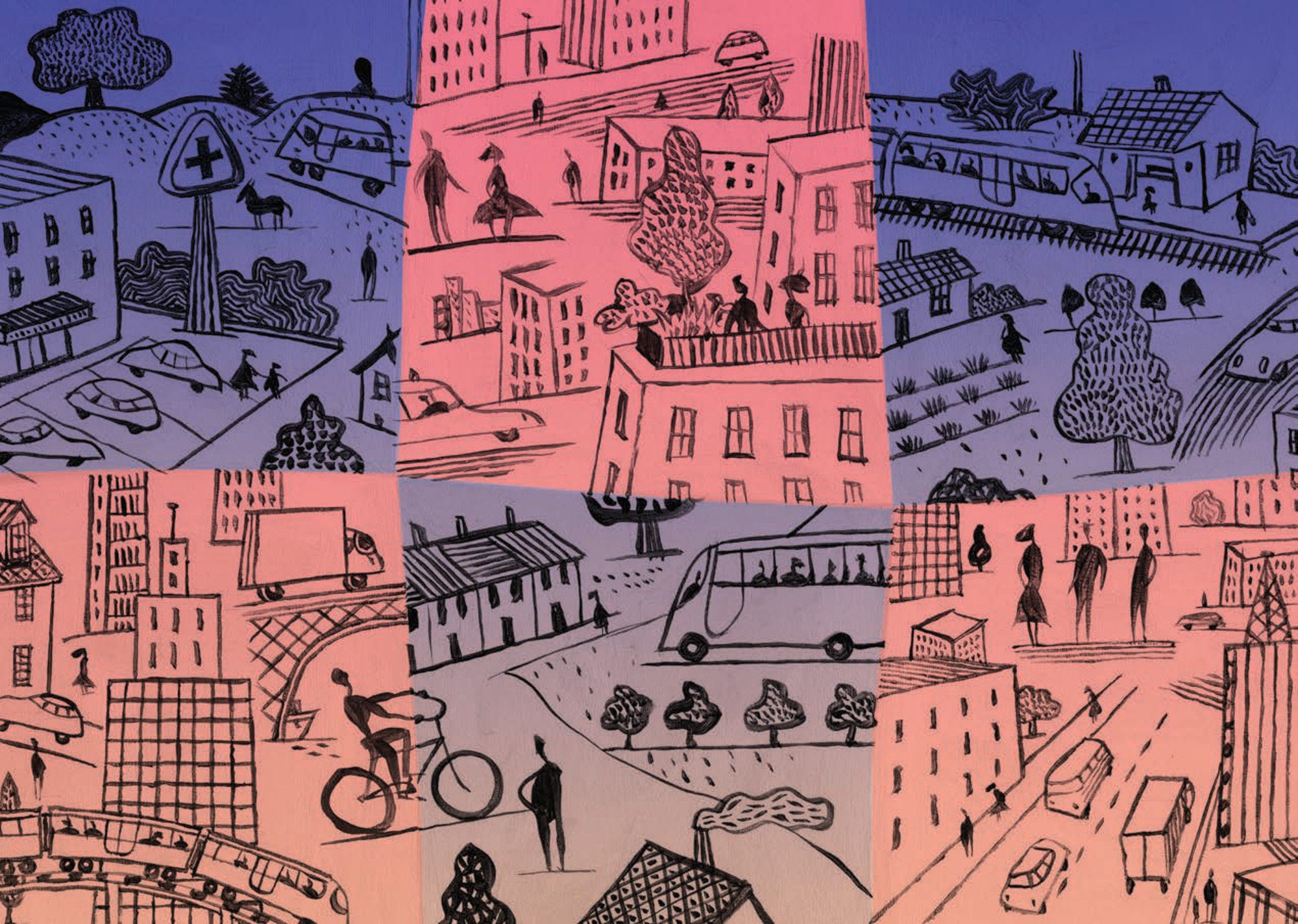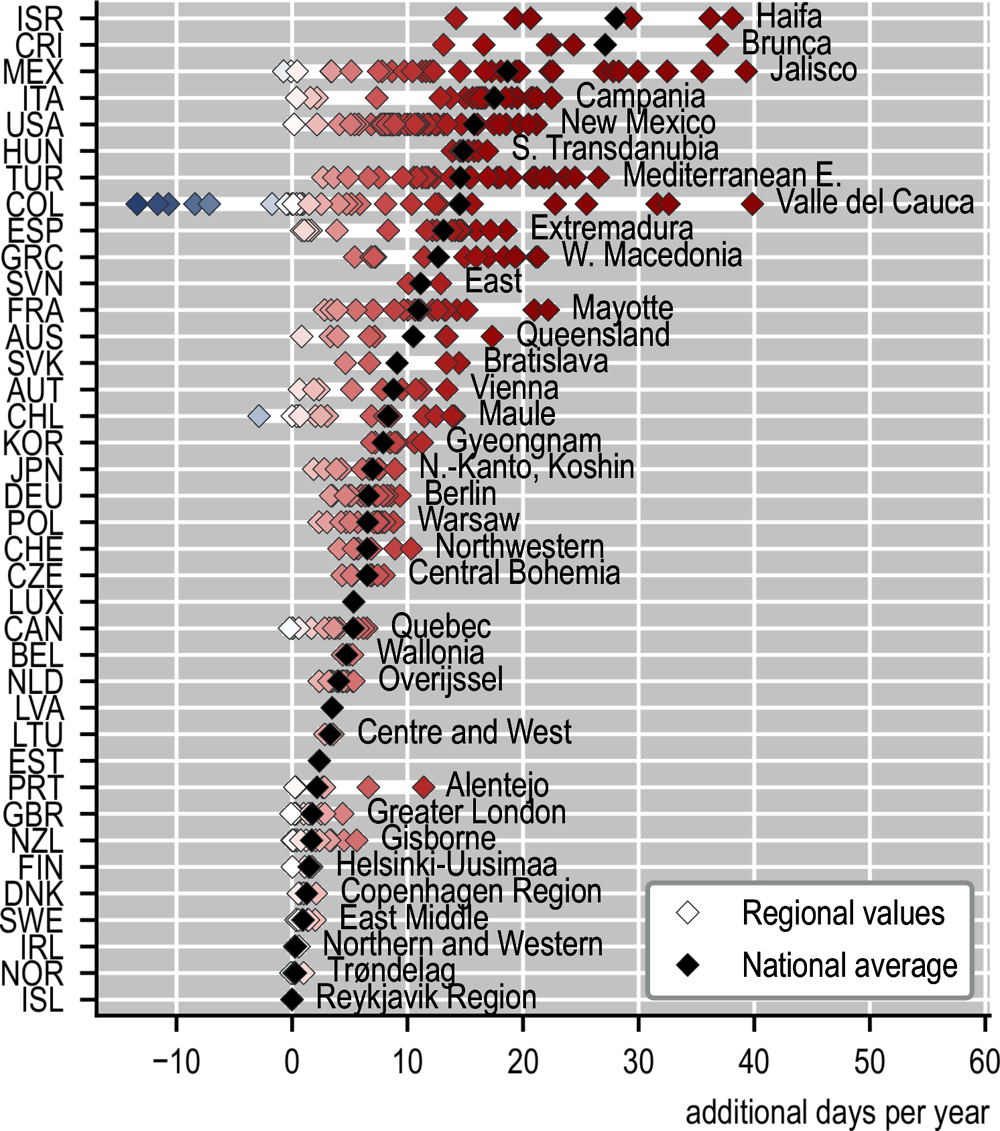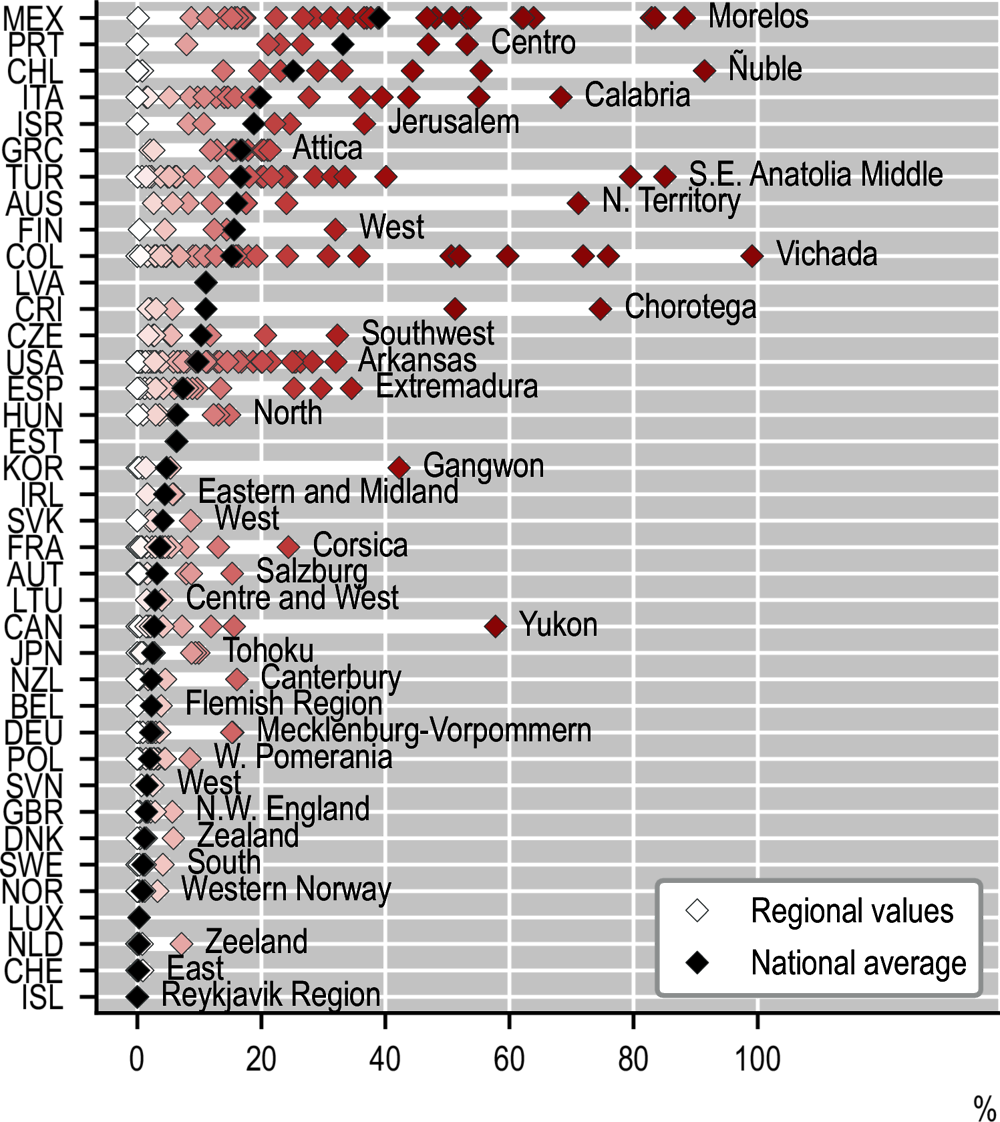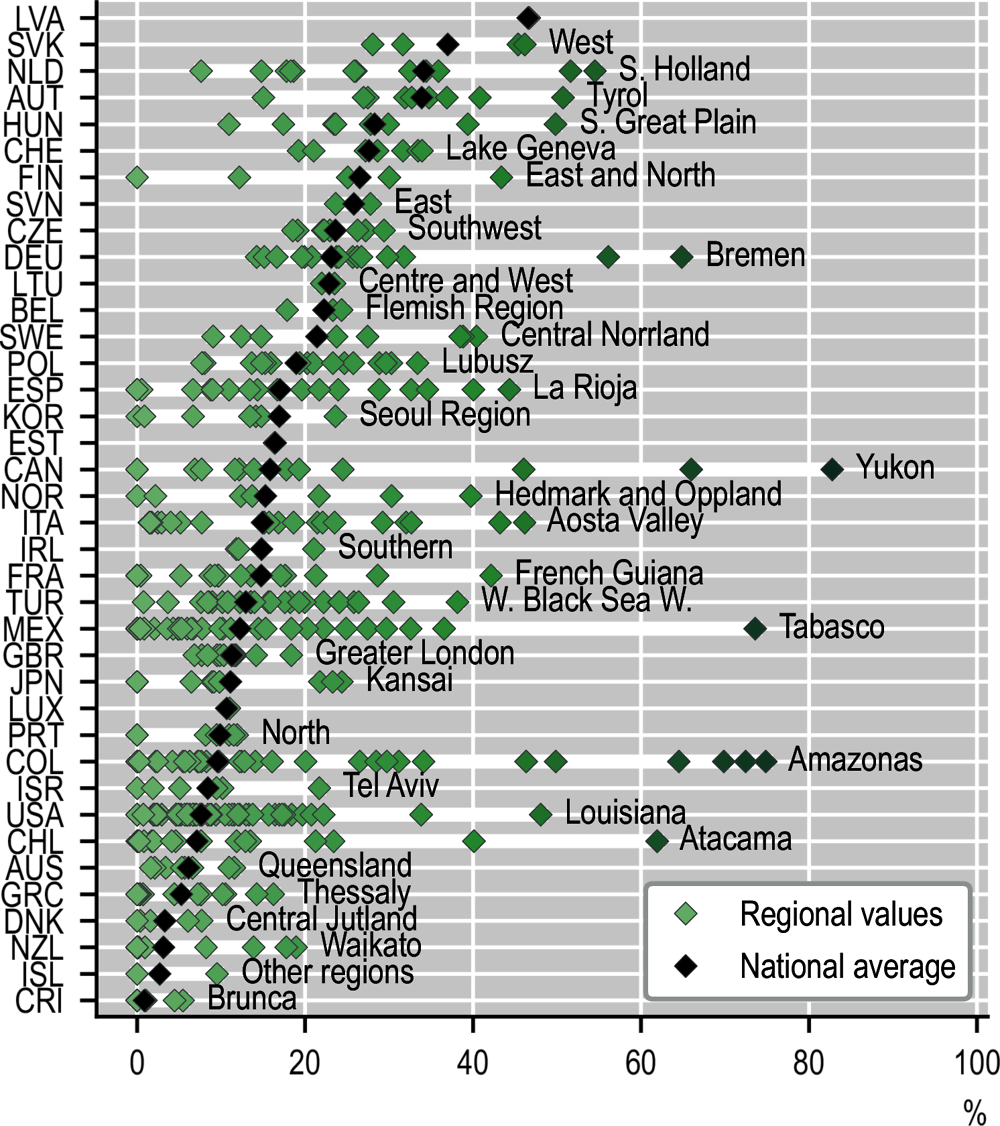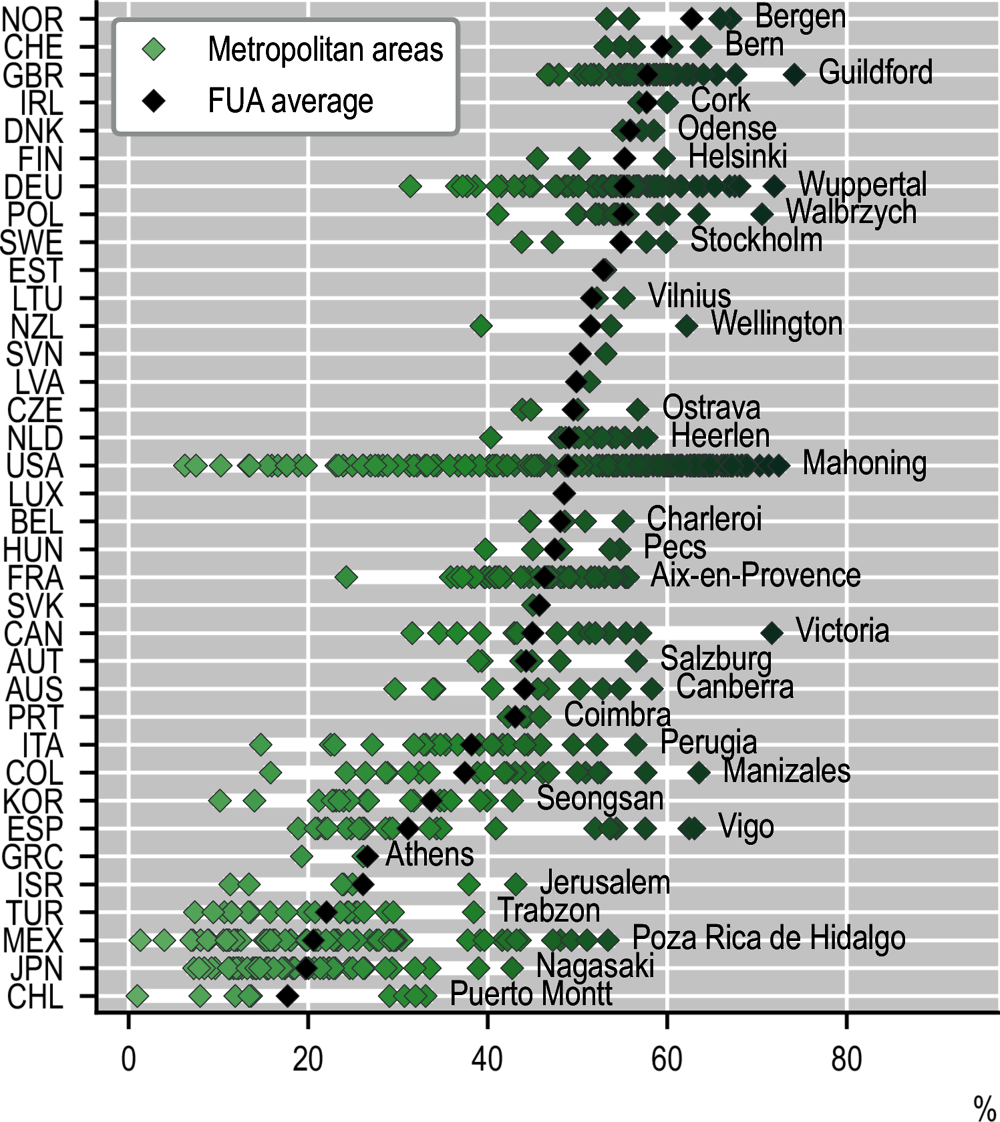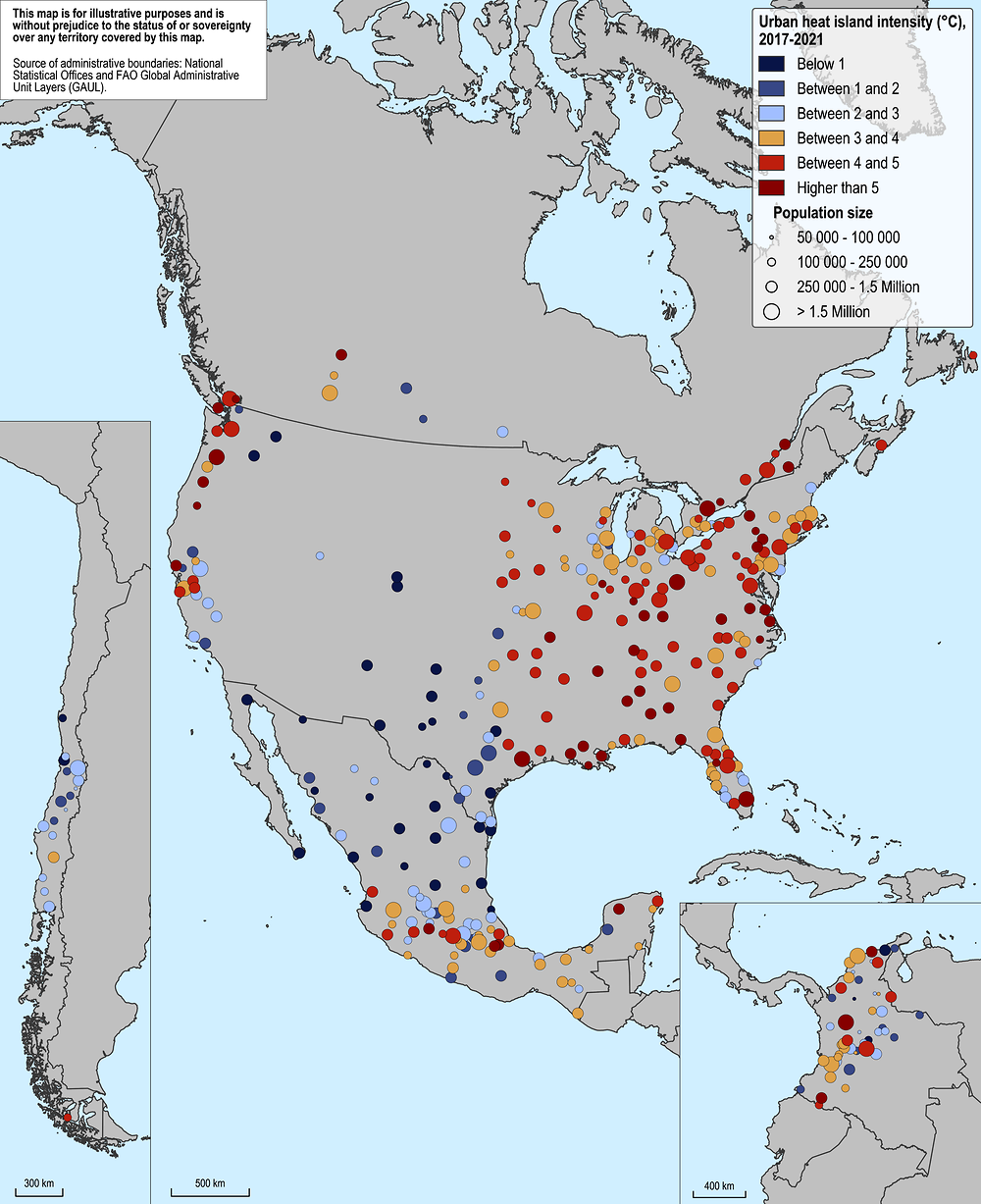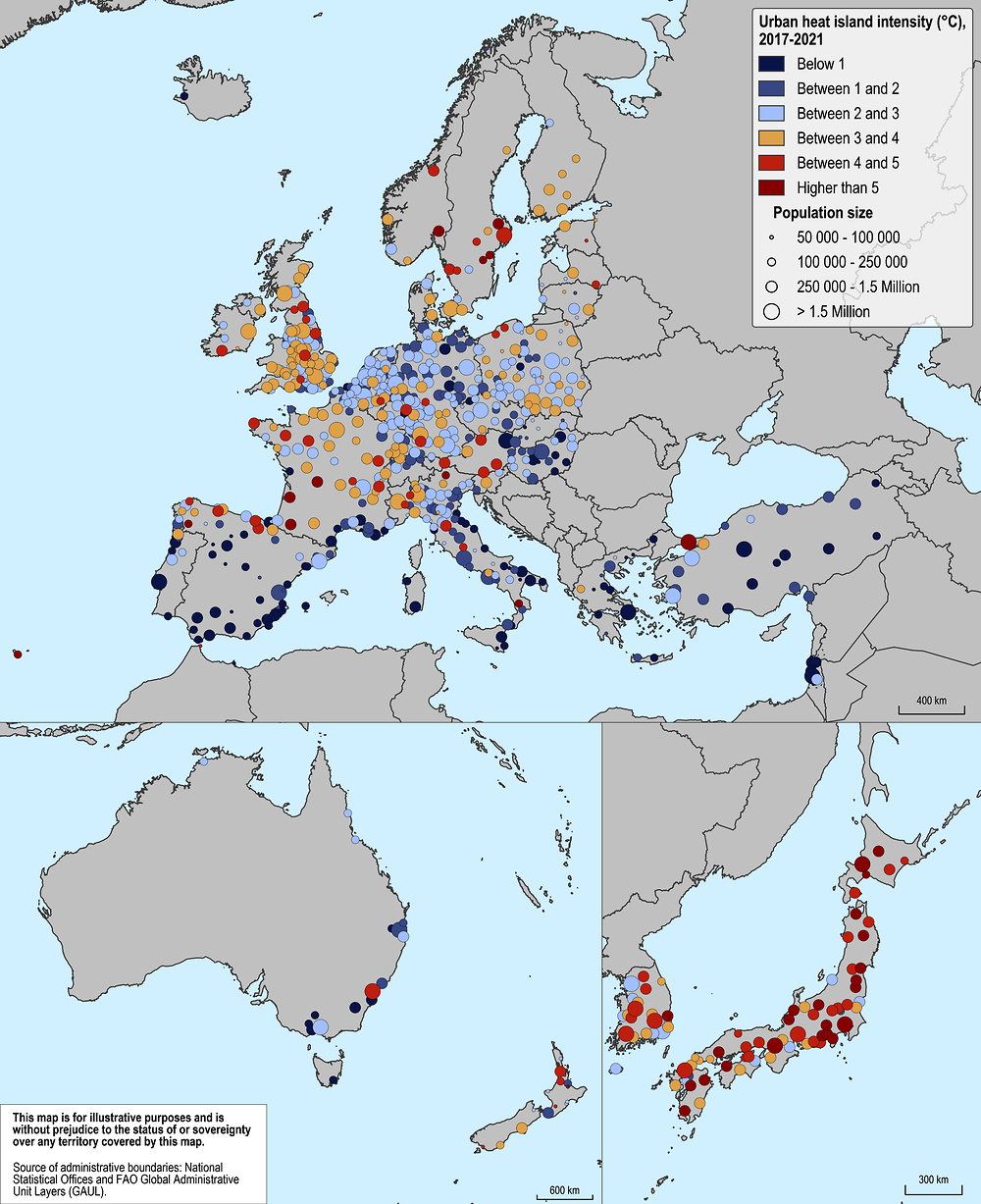Many OECD regions and cities are becoming increasingly exposed to various climate-related hazards, such as heat waves, wildfires and flooding.
Climate change has caused substantial damage to people, settlements and infrastructures, due to the increase in frequency and intensity of extreme weather events, such as heat waves, wildfires, droughts and flooding. Nearly all (95%) regions in OECD countries have been more exposed to heat stress over the past 5 years than in 1981-2010 (reference period). Heat stress has been particularly high and increased fastest in Central America and the Mediterranean Basin. Costa Rica and Israel have been hit particularly hard, as their populations experienced on average more than 140 days per year of strong heat stress, over 25 days more than during 1981-2010. The region of Córdoba (Colombia) experienced an average of 267 days per year of very strong heat stress, a 70-day longer period than during 1981-2010 (Figure 2.28).
Cities are particularly impacted by heat waves, as the temperature tends to be higher than in the surrounding areas due to the urban heat island effect. This phenomenon results from high building density, heat from human activities, building materials and limited vegetation. Extreme heat in cities has a significant impact on health and affects disproportionately low-income neighbourhoods due to fewer green areas and higher building density. In the past 5 years, almost half of OECD cities witnessed a summer daytime heat island effect of more than 3°C. The urban heat island intensity varies across OECD cities, depending on the population size and the climate zone. Built-up lands in cities with more than 250 000 inhabitants are on average 3°C warmer than their surrounding area, this difference being almost twice as high as in cities with less than 100 000 inhabitants. Cities located in Japan, Korea and the Eastern US are more affected by this phenomenon than other OECD cities. These disparities can be explained by differences in climate, urban planning cultures and vegetation (Figures 2.32 and 2.33). Adaptation policies are consequently particularly needed in cities to mitigate the impact of heat waves. This implies working on building materials and promoting green areas. In this respect, shares of green areas can be very different in OECD cities. In Ireland, Norway, Switzerland and the UK, cities include three times more green areas relative to the total area than those in Chile, Japan or Mexico. In per capita terms, cities located in the US record the highest green area per capita with 300 m2/person, compared to 26 m2/person in Chile or Türkiye (Figure 2.31).
Increasing heat stress has also been combined with more frequent and intense wildfires in OECD regions. Over the past 5 years, population exposure to wildfires has been particularly high in Chile, Israel, Italy, Mexico, Portugal and Türkiye. In 29 regions located in Latin America, Australia and the Mediterranean Basin, more than 50% of the population has been exposed to wildfires over the past 5 years. In some regions such as in Ñuble (Chile), the share of people exposed to wildfires was higher than 90% (Figure 2.29).
Climate change is also impacting the water cycle, leading to more frequent river flooding. Without higher protection standards, flood events are projected to happen more often on all continents, especially in Asia, America and Europe (Alfieri et al., 2017). Here, river flooding is assessed by looking at past events occurring on average every 100 years, referred to as 100-year floods. Latvia, the Netherlands and the Slovak Republic are the most exposed countries with more than 30% of the population exposed to floods. In 61 OECD regions, more than 30% of the population is exposed to river floods. Bremen, Gelderland, Hamburg and South Holland, are the most exposed European OECD large regions, with more than 50% of their population at risk (Figure 2.30).
